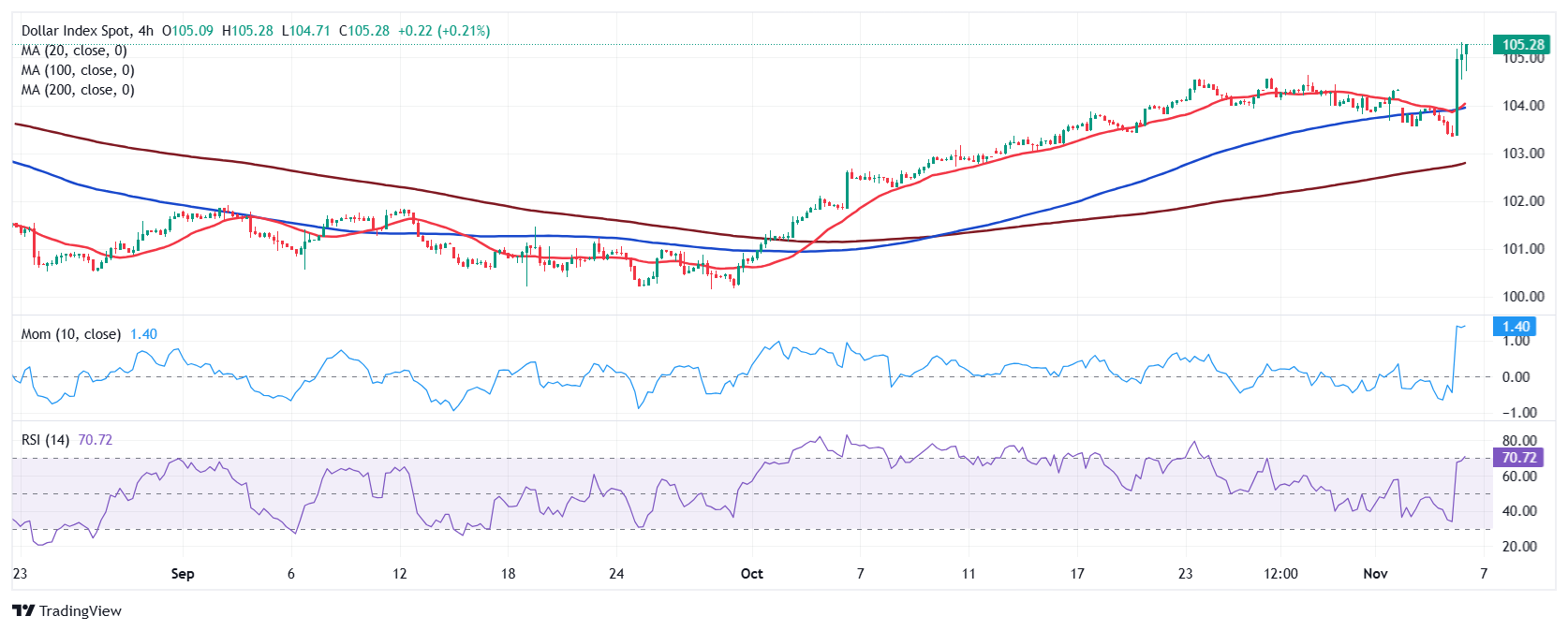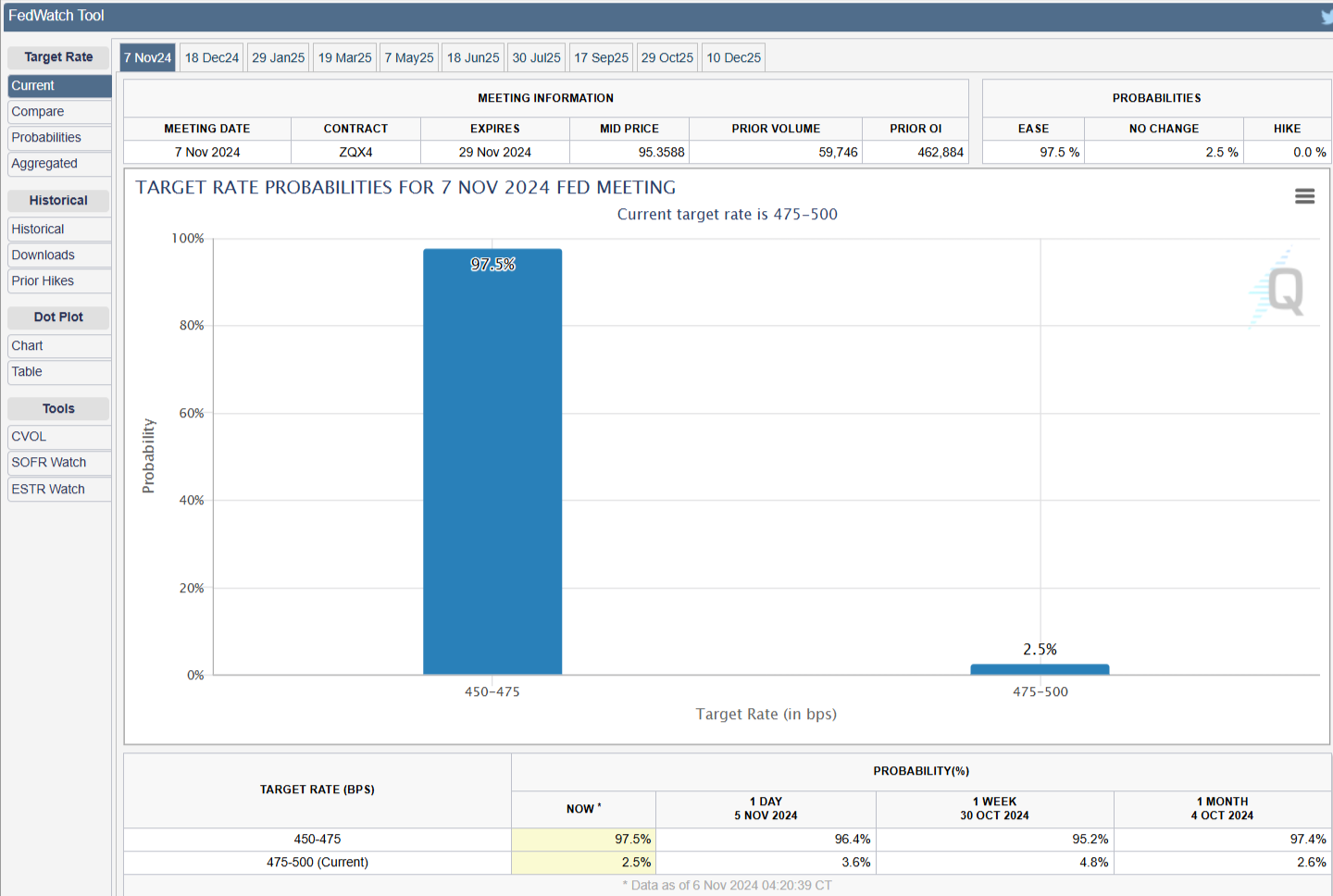The Federal Reserve (Fed) is the United States (US) central bank. A central bank usually provides financial and banking services to its country's government and commercial banking system.
It also issues the local currency and implements monetary policy. Each decision has a vast impact on the value of the local currency, and hence, Forex (FX) traders pay extreme attention to each announcement.
The Fed meets roughly every six weeks, or eight times a year, for two consecutive days, announcing its decision afterward. The decision is made by a limited number of Fed officials, known as the Federal Open Market Committee (FOMC).
Does the Fed's decision provide opportunities for traders?
Indeed, the Fed’s decisions usually trigger volatility across financial markets.
Generally speaking, changes in the interest rate affect all companies and households. Simply put, higher rates lift money costs, resulting in restricted consumption. The Fed hikes rates when it wants to cool down consumption and, hence, inflation.
The opposite scenario is also valid. Lower rates tend to boost consumption and, therefore, economic growth.
At the same time, hiking rates typically strengthen a currency –in this case, the US Dollar (USD)–while trimming them usually weakens it.
However, there is one caveat: Market players often anticipate the decision and price it in, selling or buying the USD ahead of the announcement. In this case, however, the market’s attention stands elsewhere after the US presidential election. The US Dollar soared early on Wednesday as former President Donald Trump was elected as the 47th US president.
So far, Trump has secured 277 electoral votes, seven more than the 270 electoral votes needed to become president. Trump declared victory after winning some key swing states such as Georgia, North Carolina and Pennsylvania.

The DXY US Dollar Index, which gauges the value of the US Dollar against a basket of major currencies, has fallen in the days ahead of the Fed meeting as investors broadly expect the central bank to cut interest rates.
Volatility within this kind of event is usually linked to the deviation between the market’s expectation and the actual decision.
What is expected the Fed will do in the upcoming November meeting?
Before the announcement, investors have priced in a 25 basis points (bps) cut to a range between 4.50%-4.75%. At the time being, the odds for such a decision stand at 97.5%, according to the CME FedWatch Tool, having changed little after the US election outcome.

Odds for Federal Reserve interest rate changes according to CME
This time, the Fed will not release the Summary of Economic Projections (SEP), a report that provides insights into the economic outlook and expectations of the FOMC members. It is released four times a year, with the latest published in September and the next one coming in December.
The document includes officials' perspectives on key economic figures, such as Real GDP Growth, the Unemployment Rate and Inflation. Additionally, the SEP projects the federal funds rate, which is the interest rate at which banks lend to each other.
The SEP does not grant future action or levels of economic improvement, it just outlines policymakers’ perspectives on them.
The latest release showed that officials project additional half-percentage point rate cuts in 2024, meaning 25 bps trims in November and December. Economic projections also showed another full percentage point of interest rate cuts in 2025.
Additionally, Fed officials foresee the unemployment rate rising by year-end and to remain elevated into 2025. Policymakers reduced inflation expectations, seeing it at 2.3% by the end of this year, 2.1% next year, and around 2% in 2026. The core PCE target is now forecast to decline to 2.6% by the end of this year, 2.2% next year and 2% in 2026.
Finally, the Fed decreased its growth forecast for this year from 2.1% to 2%, while retaining its 2025, 2026 and 2027 estimates at 2% and maintaining its long-run growth projection of 1.8%.
What are the different scenarios and how to trade November’s Fed decision?
As said, the USD reaction will depend on Fed’s ability to surprise investors.
Generally speaking, the interest rate announcement will trigger the initial reaction. If policymakers keep rates on hold, that would be an unexpected outcome and be read as hawkish, resulting in the US Dollar soaring across the FX board.
Officials, however, are unlikely to proceed this way, as they usually refrain from triggering volatile markets’ reactions.
A 25 bps trim, as expected, will have no significant impact on the USD, particularly in the current scenario with the focus on Trump’s victory.
Speculative interest will then wait for Chairman Jerome Powell's speech. Powell’s press conference usually hints at what the Fed may or may not do in the next meeting. This time, questions will likely revolve around how Trump’s victory will affect future Fed decisions.
For sure, Powell will deny any potential governmental influence on the Fed’s decision and reaffirm the central bank’s independence.

Main events related to the September’s Federal Reserve decision. Source: FXStreet
Given the USD momentum ahead of the announcement, dovish words from Chair Powell could trigger a bearish correction. Still, it could be short-lived, as speculative interest will likely resume buying at better levels.
Hawkish words will maintain the USD on the bullish side, yet the lack of surprise could moderate gains.
Generally speaking, and unless the message is super clear from all sides, the market would take some 15 minutes to find its way. The initial reaction could be wiped out, and the USD could change course pretty fast afterwards.
Once the dust settles, and if there is a clear path for the Greenback, the most likely scenario is that such a directional move will resume once Asian traders reach their desks.
Information on these pages contains forward-looking statements that involve risks and uncertainties. Markets and instruments profiled on this page are for informational purposes only and should not in any way come across as a recommendation to buy or sell in these assets. You should do your own thorough research before making any investment decisions. FXStreet does not in any way guarantee that this information is free from mistakes, errors, or material misstatements. It also does not guarantee that this information is of a timely nature. Investing in Open Markets involves a great deal of risk, including the loss of all or a portion of your investment, as well as emotional distress. All risks, losses and costs associated with investing, including total loss of principal, are your responsibility. The views and opinions expressed in this article are those of the authors and do not necessarily reflect the official policy or position of FXStreet nor its advertisers. The author will not be held responsible for information that is found at the end of links posted on this page.
If not otherwise explicitly mentioned in the body of the article, at the time of writing, the author has no position in any stock mentioned in this article and no business relationship with any company mentioned. The author has not received compensation for writing this article, other than from FXStreet.
FXStreet and the author do not provide personalized recommendations. The author makes no representations as to the accuracy, completeness, or suitability of this information. FXStreet and the author will not be liable for any errors, omissions or any losses, injuries or damages arising from this information and its display or use. Errors and omissions excepted.
The author and FXStreet are not registered investment advisors and nothing in this article is intended to be investment advice.
Recommended Content
Editors’ Picks

EUR/USD stays near 1.0400 in thin holiday trading
EUR/USD trades with mild losses near 1.0400 on Tuesday. The expectation that the US Federal Reserve will deliver fewer rate cuts in 2025 provides some support for the US Dollar. Trading volumes are likely to remain low heading into the Christmas break.

GBP/USD struggles to find direction, holds steady near 1.2550
GBP/USD consolidates in a range at around 1.2550 on Tuesday after closing in negative territory on Monday. The US Dollar preserves its strength and makes it difficult for the pair to gain traction as trading conditions thin out on Christmas Eve.

Gold holds above $2,600, bulls non-committed on hawkish Fed outlook
Gold trades in a narrow channel above $2,600 on Tuesday, albeit lacking strong follow-through buying. Geopolitical tensions and trade war fears lend support to the safe-haven XAU/USD, while the Fed’s hawkish shift acts as a tailwind for the USD and caps the precious metal.

IRS says crypto staking should be taxed in response to lawsuit
In a filing on Monday, the US International Revenue Service stated that the rewards gotten from staking cryptocurrencies should be taxed, responding to a lawsuit from couple Joshua and Jessica Jarrett.

2025 outlook: What is next for developed economies and currencies?
As the door closes in 2024, and while the year feels like it has passed in the blink of an eye, a lot has happened. If I had to summarise it all in four words, it would be: ‘a year of surprises’.

Best Forex Brokers with Low Spreads
VERIFIED Low spreads are crucial for reducing trading costs. Explore top Forex brokers offering competitive spreads and high leverage. Compare options for EUR/USD, GBP/USD, USD/JPY, and Gold.